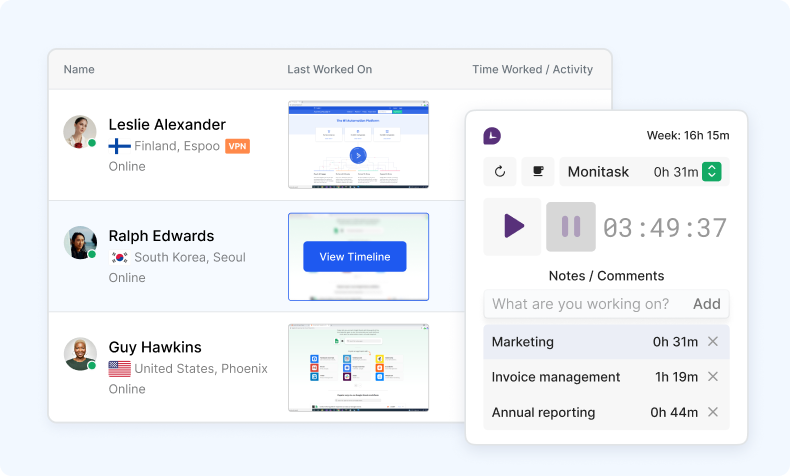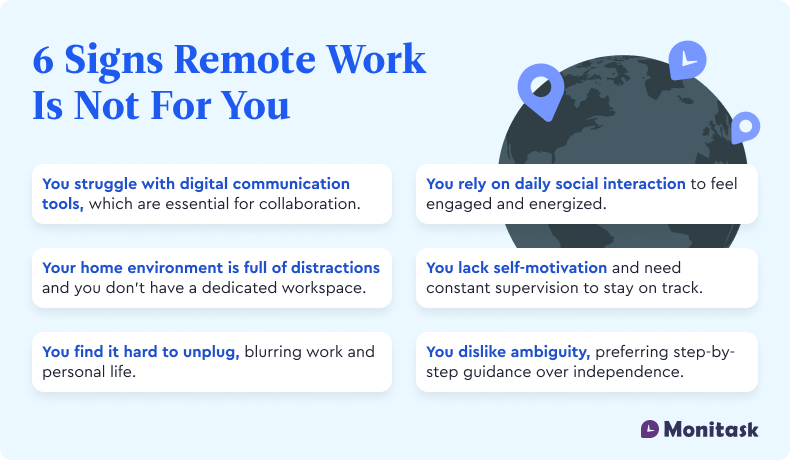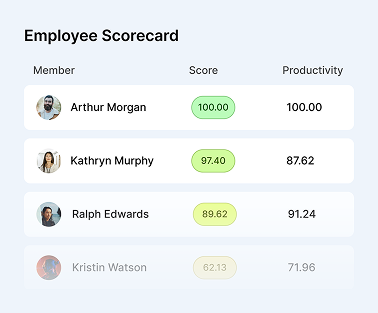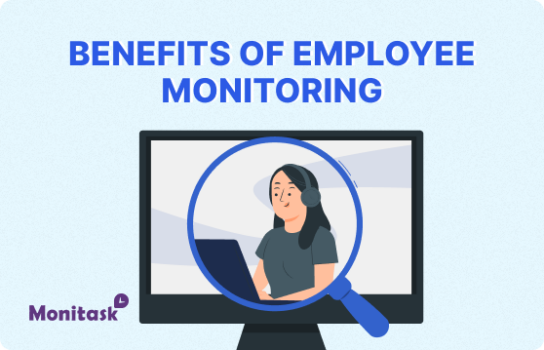Remote Work Challenges: How to Navigate the Modern Workplace

Remote work has transformed the way people work across the globe. What was once considered a niche option has become a standard practice for many companies, offering flexibility, cost savings, and access to a wider talent pool.
Despite these benefits, remote work comes with its own set of challenges that can impact productivity, team cohesion, and employee well-being.
Understanding these challenges—and finding effective strategies to address them with the help of modern tools like AI-powered platforms and real-time analytics—is essential for both leaders and remote employees.
Isolation and Loneliness
One of the most common challenges of remote work is social isolation.
Without the casual interactions that naturally occur in office environments—like lunch breaks, hallway chats, or coffee machine conversations—employees may feel disconnected from their colleagues and the company culture.
Prolonged isolation can lead to decreased motivation, feelings of loneliness, and even mental health issues.
To combat isolation, remote employees should actively participate in virtual meetings, set up regular one-on-one check-ins with managers, and seek opportunities for social interaction online or offline.
Companies can also facilitate virtual team-building events and casual chat channels to help employees stay connected.

Communication Barriers
Remote work relies heavily on digital communication, which can sometimes lead to misunderstandings. Without face-to-face cues such as body language or tone of voice, messages can be misinterpreted.
Email chains, chat messages, and asynchronous updates may also create delays or confusion, especially in fast-moving projects.
Overcoming communication barriers requires intentionality. Clear guidelines on how and when to communicate, the use of video calls for important discussions, and structured project management systems can all improve clarity.
Increasingly, companies are using AI-based transcription tools and analytics dashboards to track communication patterns and identify bottlenecks, ensuring employees feel understood and aligned with team objectives.
Work-Life Balance Challenges
Ironically, one of the main benefits of remote work—flexibility—can also create difficulties in maintaining boundaries.
When employees work from home, the line between personal and professional life can blur. Many remote workers find themselves checking emails late at night, skipping breaks, or struggling to “switch off” at the end of the day.
Leaders and employees alike should prioritize establishing clear working hours, creating dedicated workspaces, and encouraging regular breaks.
Respecting personal time and reinforcing the importance of downtime prevents burnout and promotes sustainable productivity.
Productivity and Accountability Issues
Without direct supervision, some remote employees may struggle to stay focused or manage their time effectively. Distractions at home, such as household chores, children, or noise, can reduce productivity.
On the other hand, managers may worry about whether employees are completing tasks as expected.
To address productivity concerns, companies can implement transparent time-tracking and project management tools.
Tools like Monitask, combined with automation and real-time analytics, allow employees to log work in a way that supports accountability without micromanagement.
Regular check-ins, clear deadlines, and progress updates also help employees stay on track.

Technology and Connectivity Problems
Remote work is heavily dependent on technology, and technical issues can create major obstacles. Slow internet connections, outdated software, or incompatible systems can interrupt workflows and cause frustration.
Cybersecurity is another concern, as remote work often involves accessing company networks from less secure locations.
Investing in reliable infrastructure, providing IT support, and training employees on cybersecurity best practices are essential steps to mitigate these risks.
Ensuring that employees have the right hardware and software also enables smooth collaboration and minimizes downtime.
Collaboration and Team Cohesion
Teams that are distributed across different locations may struggle to collaborate effectively.
Spontaneous brainstorming sessions, quick problem-solving discussions, and shared learning opportunities are harder to replicate remotely. Without strong collaboration, projects can stall, and employees may feel disconnected from team goals.
Companies can promote collaboration by implementing shared project management platforms, encouraging frequent video meetings, and creating structured processes for idea-sharing.
Integrating AI collaboration assistants can also help summarize meetings, highlight key action points, and ensure no one is left out of the loop—boosting cohesion across global teams.
Maximize productivity of your business
Track employee productivity and simplify work with them
Mental Health and Well-Being
Remote work can sometimes increase stress, anxiety, and feelings of isolation. The absence of social support, coupled with blurred work-life boundaries and constant digital communication, can take a toll on mental health.
Addressing mental health requires both individual and organizational strategies. Employees should practice self-care, set boundaries, and take breaks to recharge.
Organizations can offer wellness programs, mental health resources, and regular check-ins to ensure employees feel supported.
Career Growth and Visibility Concerns
Remote employees may worry that working from home reduces their visibility and chances for promotions or career growth.
Being “out of sight” can sometimes translate into being “out of mind,” affecting opportunities for advancement and professional development.
Leaders can address these concerns by recognizing achievements publicly, providing regular feedback, and offering remote-friendly learning and mentorship programs.
Employees can also proactively share updates, seek feedback, and participate in cross-team initiatives to maintain visibility.
Data-driven performance analytics can further help companies ensure fair recognition, based on results rather than physical presence.
Signs Remote Work Is Not For You
Remote work isn’t ideal for everyone. You may struggle if:

How to Decide Whether or Not to Work Remotely
Remote work sounds appealing—no commute, more flexibility, and freedom to live anywhere. But it’s not ideal for everyone. Here’s how to decide if it’s right for you:
✅ Personality & Work Style: Remote jobs suit self-motivated people who enjoy independence. If you need social energy to stay focused, it may feel isolating.
✅ Home Environment: A quiet, dedicated workspace is essential. If your home is noisy or crowded, productivity may suffer.
✅ Discipline: Without office structure, you must set your own schedule and avoid procrastination.
✅ Communication: Success depends on clear digital communication. If you struggle without face-to-face interaction, it could be tough.
✅ Career Growth: Some roles thrive remotely, others rely on in-person networking and mentorship.
✅ Lifestyle Trade-Offs:
- Flexibility vs. blurred work-life boundaries
- No commute vs. harder to “switch off”
- Live anywhere vs. risk of isolation
If unsure, test hybrid or part-time remote work before committing.
Conclusion: Modern Workplace Challenges
While remote work offers unparalleled flexibility and access to global talent, it also presents significant challenges that can impact productivity, engagement, and well-being.
Companies and employees must proactively address these challenges through communication, structured processes, wellness initiatives, and supportive technology.
With the integration of AI, analytics, and automation into remote workflows, organizations can unlock smarter ways to stay connected, secure, and efficient.
By understanding the common obstacles of remote work and implementing thoughtful strategies, businesses can build a workplace that is both productive and fulfilling for everyone involved.
– The Monitask Team
FAQ: Modern Workplace
How can companies support employees’ mental health when working remotely?
By offering wellness programs, mental health resources, and encouraging breaks. AI-powered platforms can also detect early signs of stress to support employees proactively.
How do you stay productive when working from home?
Set clear work hours, create a dedicated workspace, and minimize distractions. Tools like Monitask and AI-driven productivity analytics help track progress and optimize focus.
How can remote employees ensure career growth and visibility?
Share progress updates, join cross-team projects, and seek mentorship. Leaders should provide recognition and training, supported by analytics to highlight contributions fairly.



